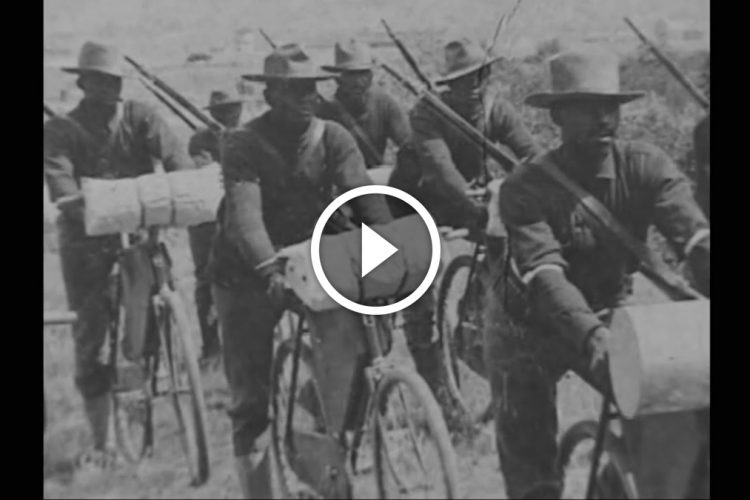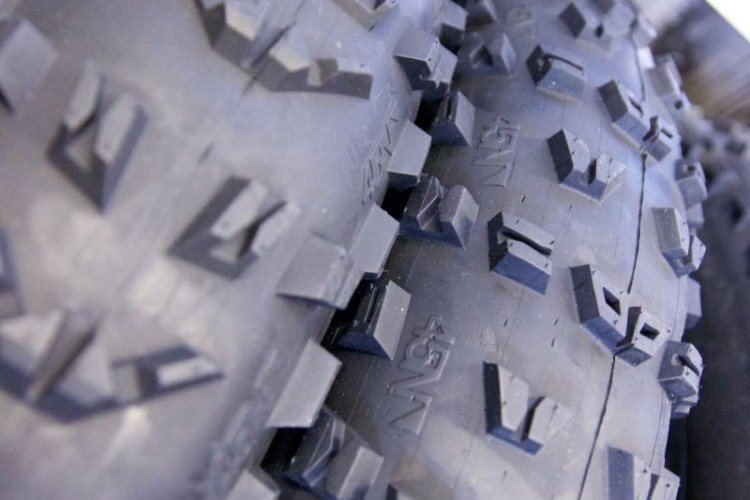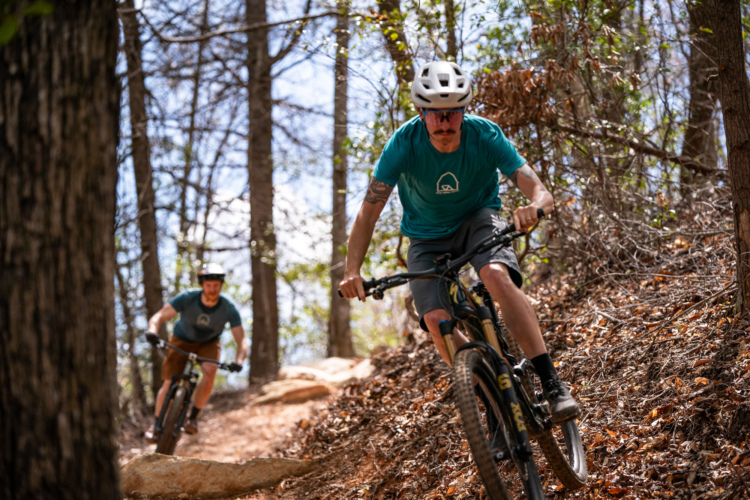Though I wish I could say that this is a personal account of an incredible trip, the following is a story about one man’s quest to find uncharted territory with his bike.

During our downtime, many of us create grandiose plans to travel to faraway lands and dream about the subsequent adventures that would follow once we would reach our destination. Bill Fleming of 9:Zero:7 bikes is no different and one day he found himself going about his daily business, equipped with a smartphone and Google Earth. He began to wonder if there was anywhere else in the world that matched his home state of Alaska’s vast expanses of wild terrain and sparse population. Bill then happened upon a map of Namibia and the idea for an adventure began to germinate; he soon found himself obsessed with the thought of biking all of Namibia’s coastal desert. However, there were some minor details that would have to be addressed before the sands of the Namib would be rolling under his tires.
The first order of business for Bill was to get in contact with bike shops in Windhoek, the capital Namibia, to determine if there had been any successful trips through the Namib desert and to see if there was any potential for support on his journey. Most replies dampened his spirits, with one email promising that his planned ride would be his last, “Do NOT attempt this trip. You will die!”, but one shop owner, former Olympic cyclist Mannie Heymans, was intrigued by Bill’s trip and the fat-tired curiosity that he was planning on riding.
Since Namibia’s annual snowfall is non-existent, Mannie had never seen a fat bike before speaking with Bill. However, he knew that if there was going to be any chance for success in the proposed pedal-powered conquest of the Namib desert, he knew that the wide tires would be key in keeping the rider from burying himself in the dunes. Mannie and Bill collaborated with Leander Borg of Naturefriend Safaris to determine the logistics of riding in one of the most inhospitable places on earth. Countless emails were exchanged between the wanderlust-filled Alaskan and his South African cohorts and soon, word had gotten out about Bill’s planned expedition. With each reply, there were more riders added to the CC list of each message. By the time the plans were finalized, 9 riders were to be trekking across the desert, with support from Leander and his crew.

Originally, Bill and his team had planned on biking from Luderitz to Walvis Bay, which would have put them squarely in diamond-mining territory, a situation that no sane person would submit themselves to. Biking across the African desert would prove difficult enough, and there was no need to add to the danger by pedaling through lands patrolled by legions of armed smugglers and security forces. To avoid any conflict and prevent any of the riders from staring down the barrel of an AK-47, an alternate route was planned that would have the group riding across the Namib desert to reach the Atlantic coast, then heading north through the invitingly-named Skeleton Coast to reach their final destination of Walvis Bay. In total, the riders had six days and over 275 miles of relentless pedaling through some of the most remote areas of the world ahead of them.
On the first day of the expedition, the excitement level was high among the team: the prospect of being the first to pedal across the Namib desert had stoked each rider’s fire, and they looked ahead with great anticipation. However, the excitement soon gave way for the leader of the trip, as Bill found himself in dire shape. It seemed as though the first day of the ride was destined to have anything that could go wrong do just that, with Bill battling a surprise bout of sickness, dehydration, cramping, and nausea, along with multiple puncture flats leaving him nearly stranded as he lost sight of the group.

Thankfully, karma–if nothing else–was in his favor that first day. One of the other riders, Guy Jennings, was a South African native who had met Bill the prior year while riding in the Iditarod Trail Invitational. During the event, Guy had received aid from Bill and it seems that it was time for the favor to be repaid. Testing the bounds of his spare bicycle tubes’ elasticity, Guy fashioned an impromptu tow rope and took the role of tow vehicle and brought Bill to the rest of the group, who were setting up camp for the night. It just goes to show: always bring spare tubes and a bit of MacGyver’s wit when you’re striking out on a big ride.

The following morning, Bill had fully recovered and Guy had reclaimed his spare tubes. The group was now at full strength, with the first day’s trials serving as a strong reminder that the desert would offer little sympathy over the remainder of the trip. Pressing on toward the coast and deeper into the desert, what little vegetation the riders saw on day one gave way to a barren, windswept landscape of red sand. The further they rode, the more their skillset shifted from fat biking to surfing, as the sands, devoid of moisture, gave way after the crest of each dune and pitched the riders down a wave of loose grit.

Progress was slow over the course of the next two days and their difficulties were compounded by a freak, fierce thunderstorm, but just as the morale of team was starting to wane, they heard an unexpected yet familiar sound. An odd feature of the Namib desert is that the dunes don’t give way prior to meeting the Atlantic Ocean, but rather run directly to the water. Late into the third day of riding, the faint sound of waves crashing could be heard from miles away. The promise of escaping the dunes egged the group on and they soon found themselves on the African coast, balancing atop peaks formed from the ocean’s relentless waves and gusts of wind.

With a favorable push from the ocean at their backs, the group descended from the high dunes and found themselves riding through abandoned diamond mining towns that were slowly being reclaimed by the sands. It seemed as though they were being rewarded for withstanding three days of constant head winds and sandblasting, with their fat tires rolling quickly over the abandoned gravel roads that used to connect these mining outposts years ago. Along the last leg of the trip, odd sights were encountered, with deserted villages, forgotten vehicles, and even shipwrecks miles from the sea, painting a clear visual of how the Namib Desert had claimed everything in its path over the years.

The final push of the trip had the group crossing the salt flats connecting Sandwich Bay and Walvis Bay. After hundreds of punishing miles across the ever-changing terrain of the Namib desert, the journey was completed and the riders could take a well-deserved and much-needed break.

Though originally designed for the cold winters and the snow that comes with them, the trek across the Namib had proven that the fat bike was more than capable of overcoming the rolling dunes and scorching heat. Bill remarked that it almost felt familiar, with the sands behaving like endless crushed snow as he pedaled through. Following this successful trip, Bill is now thinking of a new challenge to overcome by way of fat bike, saying that the only real limitation is his imagination.





















2 Comments
Apr 28, 2015
Apr 28, 2015